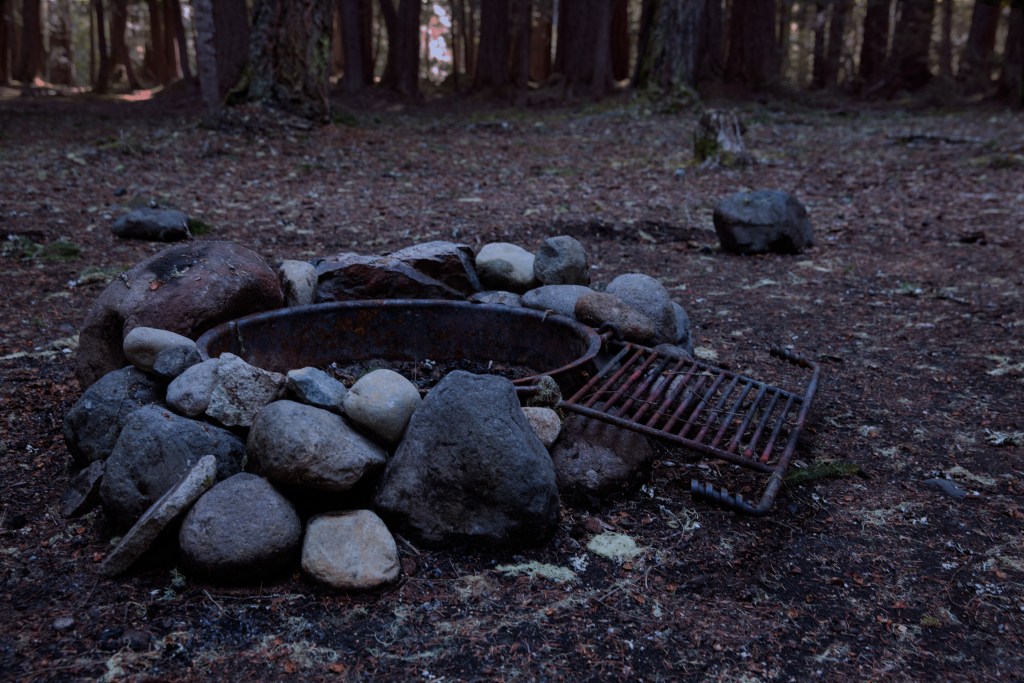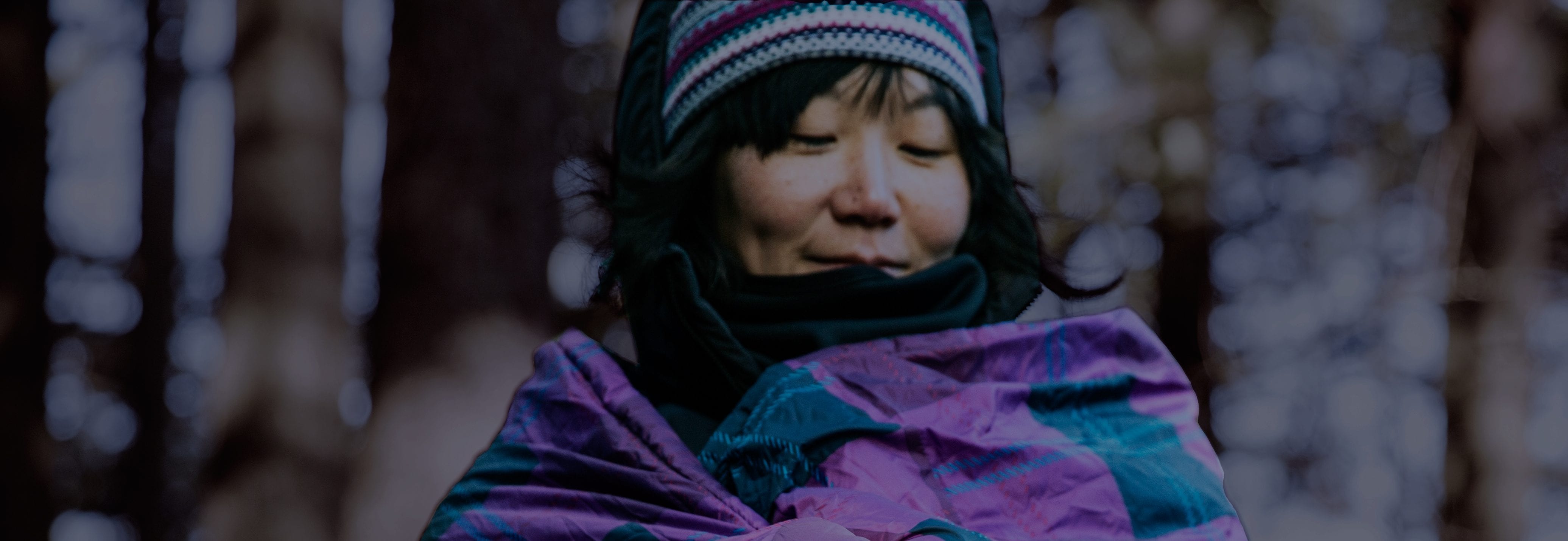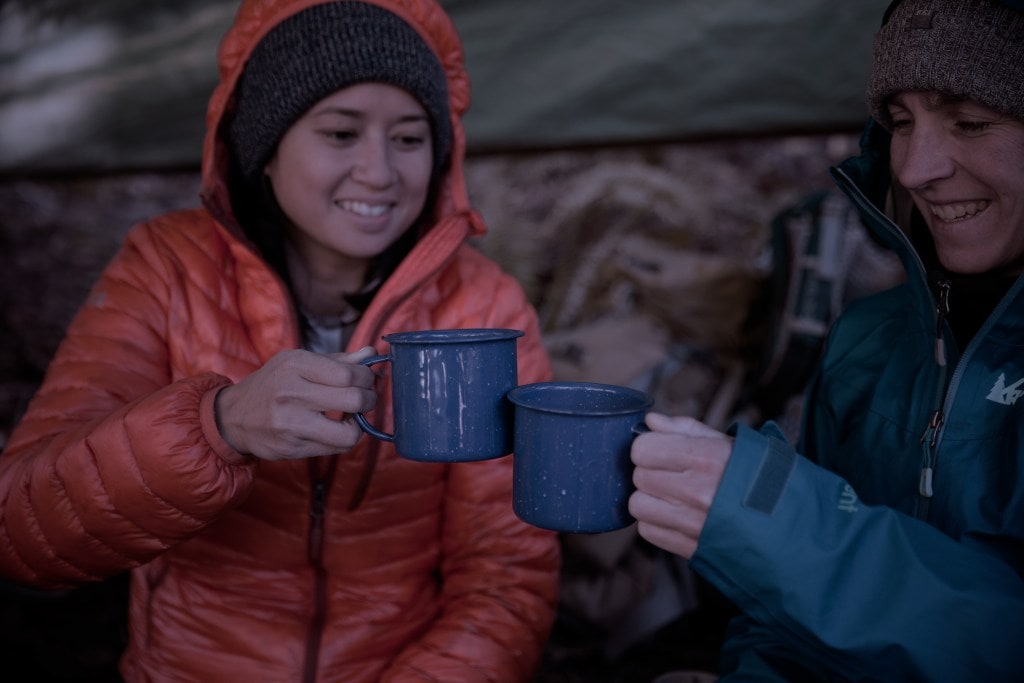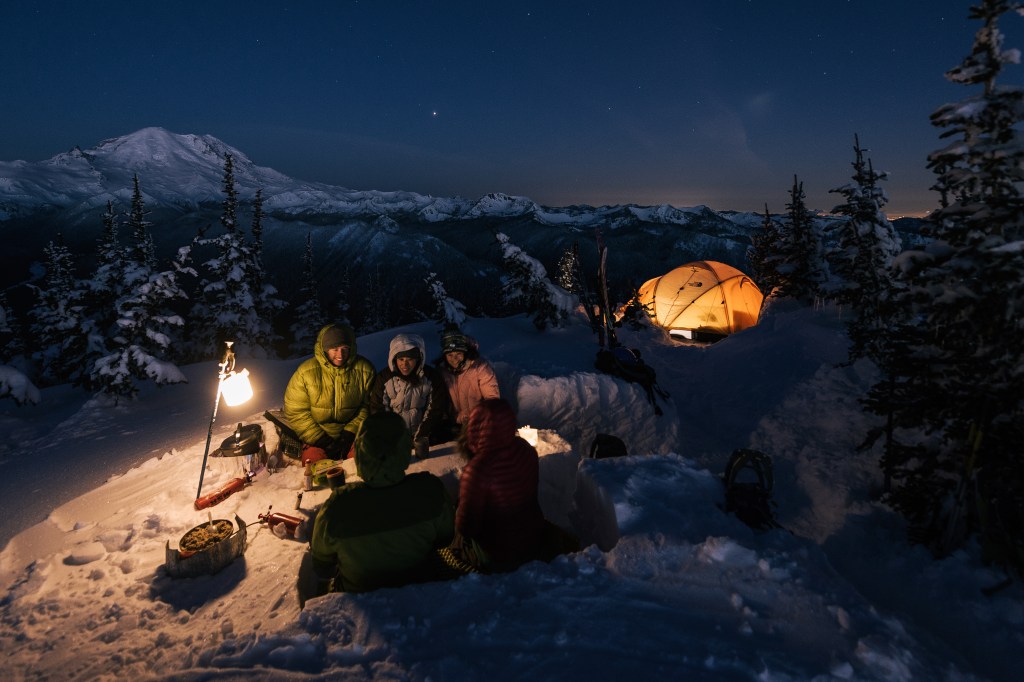Our question this time was submitted by Alan Davison, an REI Co-op member since 1999.
Few things stir the soul like a prolonged primal stare into a roaring campfire. For some, to even suggest camping without one is sacrilege. But camping without one is also part of a new outdoor reality. Between burn bans and our quest to tread ever more lightly on the wild places we love, we need to be able to re-imagine the way we camp.
For guidance on how we can keep ourselves warm and happy in a fire-free camp, we turned to REI Outdoor School Instructor Lindsay McIntosh-Tolle, who teaches a wide range of camping and backpacking skills classes in the Portland, Ore., area. “The way that I’ve always approached fire is that it’s lovely when it’s appropriate, but that it’s not always appropriate. And you can absolutely have a fabulous, awesome trip without it.”

Why Forgo the Fire?
A recent study by the University of Colorado at Boulder revealed that 84 percent of all wildfires are caused by humans and that, over the past two decades, the average length of the fire season has tripled. So it shouldn’t be surprising that fire bans are becoming more and more common.
“Be extra-aware about fire bans. They change seasonally and they can even change from week to week,” says McIntosh-Tolle. “And they can apply to both wilderness areas for backpackers and to car campgrounds.”
To find out if there’s a fire ban in the area you plan to visit, McIntosh-Tolle recommends simply doing an internet search for “current fire ban” for wherever you’re going. “Websites for places like state and national parks will be very clear when there are bans. If you’re not sure, call the nearest ranger station,” she says.
Another reason to eschew fires when camping is that it’s an easier way to leave no trace. “A fire is just a whole lot of work. You have to find a safe place for it. You have to set up a fire ring. You have to gather fuel (responsibly) and you have to be absolutely certain it’s out before you go to bed,” says McIntosh-Tolle. “And when you’re done, you need to completely disassemble your fire ring, cover up the scarred earth and return everything to its natural state.” Established campgrounds save you a few of those steps, but you’re still signing up for a night of fire tending.
Tips for Keeping Warm Without a Fire
In order to stay warm without that wood-fired heat source, it first helps to understand that our bodies lose heat for a variety of reasons. If you’re starting to get cold, sleuth out which one is the culprit and fix it.
Conduction: This is the transfer of heat by direct contact. “I might have a bunch of good layers on,” says McIntosh-Tolle, but “if I’m sitting on a big, cold rock, then I’m losing heat that way.”
“Any time you sit on the cold ground, you’re going to lose that thermodynamic battle because [the ground is] always going to have more cold than you have warmth.” The good news is you can fix that by putting something beneath you: An insulated sit pad or sleeping pad works great. Even a camp chair helps because it breaks the direct connection between you and the ground.
Convection: This is the transfer of heat through the air: wind blowing your warmth away from bare skin or out through your fleece, for example. One solution is to put on your rain gear, even when it’s not raining. Standard fleece is breathable, which is nice, but that also means that wind can get through it. Because rain gear has to be able to block wind-driven rain, it also excels at keeping out wind.
Radiation: Our bodies naturally give off heat. “That’s where layers come in. You’re basically just adding insulation in order to minimize heat loss through radiation,” says McIntosh-Tolle. Interestingly, the long-held notion that wearing a hat is extra valuable because we lose most of our heat through our heads isn’t exactly true. We lose heat pretty equally throughout our bodies. So putting on a beanie helps because our head is often one of the last places many of us cover. Keep in mind, however, that a beanie can’t compensate for inadequate insulating layers elsewhere.
Evaporation: “I’m a big advocate of the concept of ‘dry equals warm,’ ” says McIntosh-Tolle. If you’re damp, that water will evaporate and make you colder, so be sure to change out of your sweaty clothing. “For sleeping, I always try to have a “sacred” set of clothes—something that I only wear for sleeping. At the very least, I’ll bring a sacred set of socks. Having something that’s clean and dry next to your skin makes all the difference.”
Respiration: This form of heat loss is one you really can’t do much about because not breathing isn’t an option!” says McIntosh-Tolle.
Gender and body type: Typically, women lose heat more rapidly overall than men do, which is why women’s sleeping bags have more insulation overall and temperature ratings that are specifically calibrated for them. “And our feet and our hips tend to get really cold when we’re sleeping. That’s part of why women-specific sleeping bags are designed the way they are. They have extra insulation in those areas,” she says.
She suggests extending that thinking to hanging around camp as well: Thicker socks or a jacket that covers the hips can help those areas. One other option she recommends: “I thought that a down skirt was the goofiest thing I’d ever heard of. Then I put one on and said to myself, ‘Oh, this is lovely.’ ”
A Few Other Tips for Building Heat
Add calories: Snacks, like peanut butter or candy bars, and warm (nonalcoholic) drinks, like hot cocoa, help fuel your metabolic furnace. And hydration, even in the form of zero-calorie water, helps because fluids are used by your body to burn fat, which produces heat. “And if nothing else,” says McIntosh-Tolle, “being well-hydrated just helps you function better.”
Stay a little bit active: You want to move around. There’s kind of that balance, though. “If you’re cold, you don’t want to do so many jumping jacks that you’re sweaty,” says McIntosh-Tolle.
Don’t wait until you’re freezing: “Be proactive about it,” says McIntosh-Tolle. Do your research so you’ll know what to expect, temperature-wise on your trip, “and prepare for slightly colder temperatures than the weather is predicting.”
“Also, some people just run really cold. Other people are furnaces and they’re always warm. … So, it’s important to have that self-awareness,” says McIntosh-Tolle, “so you can adjust gear choices accordingly.”
But Where Do You Gather and Cook S’mores?
The campfire has long served as our outdoor entertainment hub: the setting for traditions like singing, telling stories and roasting marshmallows. “A lot of folks have that kind of gut reaction to do that when there is a fire,” says McIntosh-Tolle. “But you can encourage it even when there isn’t a fire. It just takes a little more intention.”
Lanterns: “You can create that gathering place by setting your camp up around a central location, like a picnic table. Placing a couple of lanterns on that can create a lighted focal point for your camp.”
“People naturally gather where there’s light. You can find lanterns now that have a softer glow that kind of mimics what a campfire does,” says McIntosh-Tolle. “Gas lanterns typically give off a nice warm light. If you opt for a battery-powered LED model that gives off a slightly cooler light, you have the advantage of not worrying about kids burning themselves and of being able to take it into a tent later.”
Stoves: Whether it burns gas or an alternative fuel, there’s nothing quite like the instant on/off convenience of a backpacking or camping stove. And while she doesn’t recommend dripping marshmallow goo into the burner of your stove, McIntosh-Tolle says that “a determined camp chef can construct the whole s’more, then sear it lightly in a pan.”
Stars: One plus about using light and heat sources that you can turn off and on is that they make it easy to stargaze. You’ll just need to give your eyarees time to acclimate to the dark after you turn your lights out. Once you’ve made that transition, you’ll discover that few things stir the soul like gazing up at the galaxy and contemplating your place in the universe.
Meet the Expert

Outdoor School Instructor Lindsay McIntosh-Tolle (REI Portland, Ore.) teaches a wide range of camping, backpacking and wilderness skills. She developed a healthy respect for fire safety as a young canoe guide in northern Minnesota’s Boundary Waters Canoe Area Wilderness, where a nearby group failed to fully extinguish a campfire and burned down half an island.



